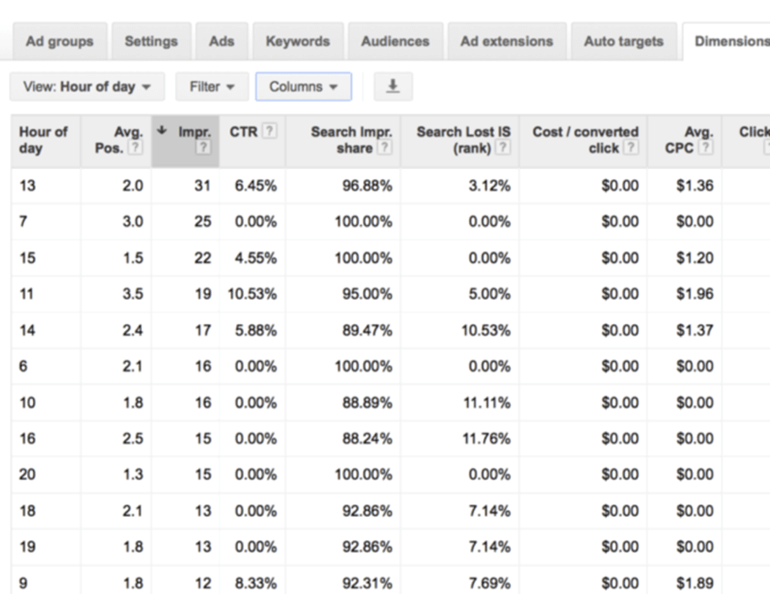Demystifying Average Position in AdWords

I plan to dig into what seems like one of the more simple metrics – average position. It seems pretty straight forward, right? Avg. position is the where your ad lands on the page most of the time, right? Not so much. The avg. position is the mean average of where your ad is placed. This type of average can be very misleading if not broken down correctly so below we will check out the man behind the curtain and see what’s really going on with your avg. position.
If you’ve spent much time in PPC, you have probably heard this statement before “I want my ads to always be in position 1”. As many of you know this can be a tricky feat and may not be the best strategy for your client. Below I will cover in detail what avg. position really means and how to analyze the data to determine what is the most profitable position for your ads.
What is Average Position?
Before we get into the weeds of avg. position, let’s start with the basics and break down the actual definition. First, ad position is determined by ad rank, which is a score that Google calculates based on your bid and your quality score. This method allows Google to reward advertisers with a good ad position because of quality ads, keywords and landing pages, instead of just who has the highest bids.

Google’s definition of average position is “A statistic that describes how your ad typically ranks against other ads. This rank determines in which order ads appear on the page.” An average of position of 1-4 are on the first page. It’s pretty rare that you find yourself in position 1.0 all of the time. We tend to see something like 1.2 or 2.3 average positions, which means that you are “typically” landing between ad position 1 & 2. I use quotations around typically because as I mentioned earlier in this post, average position is a mean average calculation, which means that your ad position is weighted by the number of impressions at each position. So, if you were getting the majority of impressions in ad position 2 but several other times through the day you could have been in position 1 or 6.
Analyzing Average Position
To analyze your average position in AdWords, select a single day, navigate to the ever so favorite Dimensions Tab, and segment by “Hour of the Day”. I think it’s also important to pull in “Search Impression Share” and “Search Lost IS (rank)”. Pulling in this data will allow you to see what average position you were in throughout the day to see if you were losing impression share due to ad rank.
Once you’ve pulled in those columns, maybe even pull out the trusty pivot table to determine how many times a day were you actually in your average position. You may find that you are actually more profitable in an average position of 2.2 than you were in position 1.2. This will vary from campaign to campaign but at least this will give you a start to seeing what’s really going on behind the avg. position curtain and help you better optimize your campaigns.

How to Adjust Ad Position
After running your avg. position analysis you may find that you need to decrease your bids to be in a lower position for the best CPA. Or maybe increase your bids and focus on increasing quality score to improve your ad rank and ad position. You might even find that your “Search Partners” position performs better than “Google Search” and then could separate out search partners from Google Search allowing you to better optimize for those campaigns.
Final Thoughts
Every PPC account and campaign will be different but hopefully, now you have a better understanding of average position and how to break the data down to figure out what is the best position for your ads.
———-
2014 original post was brought to you by Cassie Oumedian, Associate Director of Services at Hanapin Marketing!



